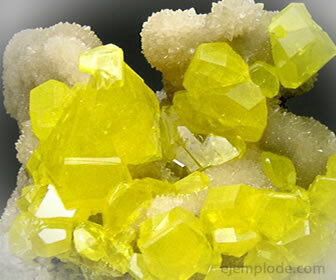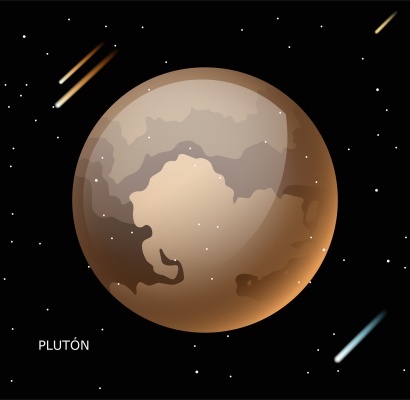Nonmetals Example
Chemistry / / July 04, 2021
Nonmetals are chemical elements that do not have the characteristics of metals. After hydrogen, which heads group IA, these are located on the right side of the periodic table, forming a stepped region that includes part of the groups IVA, VA, VIA, VIIA and VIIIA. They lie above the region described by metalloids.
Some of them are gases in their elemental state: hydrogen (H), oxygen (O), fluorine (F), chlorine (Cl) and noble gases. Only bromine (Br) is liquid. All other non-metals are solid at room temperature. Compounds that are formed by combination of metals and non-metals tend to be ionic, forming a metallic cation and a non-metallic anion.
Examples of non-metals
All the nonmetals in the periodic table are:
- Hydrogen (H)
- Carbon (C)
- Nitrogen (N)
- Phosphorus (P)
- Oxygen (O)
- Sulfur (S)
- Selenium (Se)
- Fluorine (F)
- Chlorine (Cl)
- Bromine (Br)
- Iodine (I)
- Helium (He)
- Neon (Ne)
- Argon (Ar)
- Krypton (Kr)
- Xenon (Xe)
- Radon (Rn)
Follow with: Metals.
Properties of non-metals
The characteristics that define each of the non-metals are explained below.
Hydrogen (H)
Hydrogen is a chemical element with atomic number 1 and whose atomic mass is 1 g / mol. It is the simplest of all the elements that are known. Generally, in its elemental form it is found as a diatomic molecule (H2). It is a colorless and odorless gas and it is not toxic. It has a boiling point of -252.9 ° C.
It is the most abundant element in the universe, and constitutes approximately 70% of the mass of the universe. It is so light that planet Earth does not have enough gravitational pull to hold it inside. Therefore, this element is not part of the Earth's atmosphere.
Carbon (C)
Carbon is the chemical element that has atomic number 6 and atomic mass of 12 g / mol. Although it only constitutes 0.09% by mass of the earth's crust, it is an essential element for living matter. It is found free in the form of diamond and graphite, and is also a component of natural gas, oil, and coal.
Is he fundamental element of organic chemistry. It forms covalent bonds with more carbon atoms and with others such as hydrogen and oxygen, to form long-chain, stable molecules. In addition, it participates in more complex structures, which give rise to biological substances.

Nitrogen (N)
Nitrogen is a chemical element with atomic number 7 and atomic mass of 14 g / mol. It forms 78% of the volume of air. Its molecule is diatomic (N2), and its main mineral sources are potassium nitrate (KNO3) and sodium nitrate (NaNO3), also called salitres. Nitrogen is an essential element for life, as it is a component of proteins and nucleic acids.
The nitrogen molecule N2contains a triple bond and is very stable. However, nitrogen forms a large number of compounds with hydrogen and oxygen, in which its oxidation number varies from -3 to +5. Most of these compounds are covalent. However, when nitrogen is heated with certain metals, it forms nitrides, which are ionic.
Phosphorus (P)
Phosphorus is a chemical element with atomic number 15 and atomic mass of 30.97 g / mol. It is found in nature, commonly as phosphate rocks, formed mainly of calcium phosphate Ca3(PO4)2. Free phosphorus is obtained by heating calcium phosphate with coke and siliceous sand.
There are several allotropic forms of phosphorus, but only the white phosphorus and the red phosphorus they get more attention. White phosphorus is made up of tetrahedral molecules P4 discrete, and is a solid insoluble in water and very toxic. When heated in the absence of air, it turns into red phosphorus, which has a polymeric structure, and is more stable and less volatile than white.
Oxygen (O)
Oxygen is a chemical element with atomic number 8 and atomic mass of 16 g / mol. It is by far the most abundant element in the earth's crust, covering almost 46% of its mass. Understand the 21% of the volume of the atmosphere, accompanying 78% nitrogen and the rest of the gases that make up this surface layer. There, it is found in the free state as a diatomic (O2).
Oxygen is capable of combining with metals and other non-metals, to form oxides. In addition, it is a fundamental unit of the construction of all biomolecules, since it constitutes almost a quarter of all the atoms of living matter. Molecular oxygen is the essential oxidant in metabolic degradation of food molecules.
Sulfur (S)
Sulfur is a chemical element with atomic number 16 and atomic mass of 32 g / mol. Although it is not a very abundant element, as it covers 0.06% of the mass of the earth's crust, it is very accessible because it is common to find it in nature in its elemental form. It can be found abundant in gypsum (CaSO4* 2H2O), in pyrite (FeS), in hydrogen sulfide (H2S).
Sulfur has various allotropic forms. The most important are rhombic sulfur and monoclinic sulfur. The rhombic sulfur is the most thermodynamically stable form, and has an annular structure S8 folded. It is a yellow solid, tasteless, odorless and insoluble in water. By heating, it becomes the monoclinic, also formed in S8.

Selenium (Se)
Selenium is a chemical element with atomic number 34 and atomic mass of 78.97 g / mol. It is the next element in the Oxygen family, after this and Sulfur. It can manifest itself in various allotropic forms: amorphous selenium, which occurs in colloidal red or black vitreous forms; the crystalline gray selenium Y monoclinic red selenium.
Fluorine (F)
Fluorine is a chemical element with atomic number 9 and atomic mass of 18.99 g / mol. It is the one that heads the VIIA group, being the first halogen. It is the element with higher electronegativity, having this a value of 4.0. It is a pale yellow gas at room temperature. One of its best known compounds is sodium fluoride NaF, which is added to drinking water to prevent cavities.
Chlorine (Cl)
Chlorine is a chemical element with atomic number 17 and atomic mass 35.45 g / mol. It is a gaseous, yellowish-green halogen. It occurs in nature combined with metals in binary salts and oxysalts. Has a huge reactivity, making it easy for it to engage in a chemical reaction to create both organic and inorganic compounds.
Bromine (Br)
Bromine is a chemical element with atomic number 35 and atomic mass 79.90 g / mol. In its elemental state, it is a halogen that appears as a brownish-orange liquid. It is slightly less reactive than chlorine, but it is found in nature combined with metals in binary salts and in oxysalts. It is capable of reacting to create organic alkyl halides.
Iodine (I)
Iodine is a chemical element with atomic number 53 and atomic mass 126.90 g / mol. In its elemental state, it manifests as dark crystals that give off a violet vapor, as these are sublimating. It is essential to form thyroxine, which is the hormone secreted by the thyroid gland. Enough can be consumed in iodized table salt.
Helium (He)
Helium is a chemical element with atomic number 2 and atomic mass 4 g / mol. It is the first of the noble gases, a group of inert elements (that is, they do not react) that make up a very small percentage of Earth's atmosphere, about 0.1%. It is one of the lightest gases, so it is used to fill party balloons, leaving these floating for longer.
Neon (Ne)
Neon is a chemical element with atomic number 10 and atomic mass 20.18 g / mol. It is the second of the noble gases, and is most often used for create fluorescent lamps for eye-catching advertisements. These can be of different colors and have an intense luminosity.

Argon (Ar)
Argon is a chemical element with atomic number 18 and atomic mass 39.95 g / mol. It is the third of the noble gases, and is used as an inert gas that replaces air in packaged drinks. For this reason, when removing the lid of a juice or a fruit drink, a gas is heard escaping subtly. It is argon, which is responsible for better preserving the drink.
Krypton (Kr)
Krypton is a chemical element with atomic number 36 and atomic mass 83.80 g / mol. It is the room of the noble gases. Although it is a generally inert gas, fluorinated krypton compounds have been found.
Xenon (Xe)
Xenon is a chemical element with atomic number 54 and atomic mass 131.29 g / mol. It is the fifth of the noble gases; it is odorless and colorless and very heavy. It can be used as an anesthetic in general anesthesia, and as a raw material for photographic flashes.
Radon (Rn)
The reason is a chemical element with atomic number 86 and atomic mass 222 g / mol. It is the last of the noble gases and is a radioactive element. It's a colorless, odorless, and tasteless gas. Its isotope Rn-219 comes from the radioactive decay of actinium.



